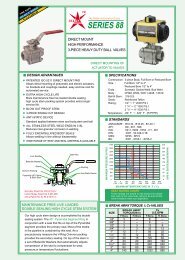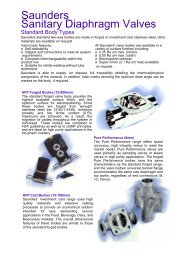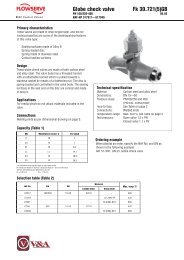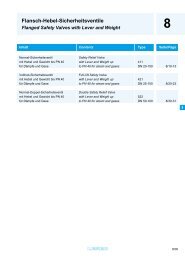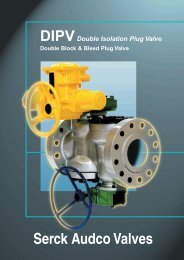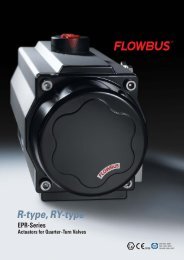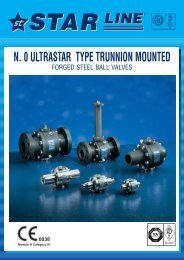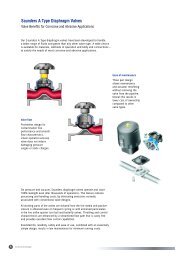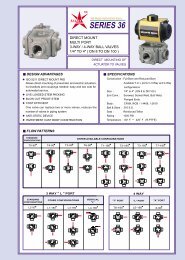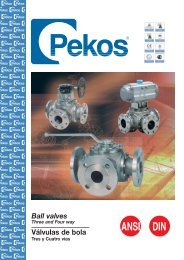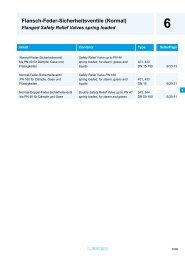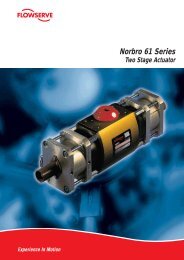Equipment/ functions - Process Valve Solutions
Equipment/ functions - Process Valve Solutions
Equipment/ functions - Process Valve Solutions
Create successful ePaper yourself
Turn your PDF publications into a flip-book with our unique Google optimized e-Paper software.
Magnetic limit and torque transmitter (MWG) (option)<br />
The magnetic limit and torque transmitter<br />
converts the mechanical values<br />
of limit and torque into continuous<br />
electronic signals.<br />
The simultaneous use of integral<br />
controls which evaluate the signals<br />
is a prerequisite for the use of the<br />
MWG. This variant does not require<br />
Absolute travel measurement –<br />
without battery<br />
The valve position is determined<br />
using a so called multi-turn-absolute<br />
encoder.<br />
Four shafts, each with a ratio of 8:1,<br />
are used to convert the travel into an<br />
electronic signal. Each valve position<br />
is assigned an unambiguous<br />
combination of the 4 shaft positions.<br />
Magnets and hall sensors register<br />
the shaft positions electronically.<br />
As soon as the power supply has<br />
been restored after a power failure,<br />
the current valve position is immediately<br />
available; a reference operation<br />
is not required. Position changes<br />
due to manual operation during<br />
power failure are registered by the<br />
MWG even without supply voltage. A<br />
battery is not required.<br />
Torque – continuously available<br />
The proven design of the sliding<br />
worm provides the mechanical principle<br />
of torque sensing. A torque at<br />
the output drive results in an axial<br />
movement of the sliding worm<br />
against the spring action. With a<br />
lever, the axial movement is transformed<br />
into a rotary movement. Hall<br />
sensors convert this movement into<br />
an electronic signal.<br />
any switches for limit positions or<br />
torque.<br />
Actuators with MWG have the following<br />
advantages.<br />
■ Non-intrusive setting is possible<br />
(see page 12)<br />
Torque signal<br />
to the controls<br />
Travel/ position signal<br />
to the controls<br />
<strong>Equipment</strong>/ <strong>functions</strong><br />
■ A torque signal is permanently<br />
available. It can be used for<br />
switching off at the set tripping<br />
torque. It can also be transmitted<br />
for external use, for example for<br />
torque monitoring at the valve.<br />
11



